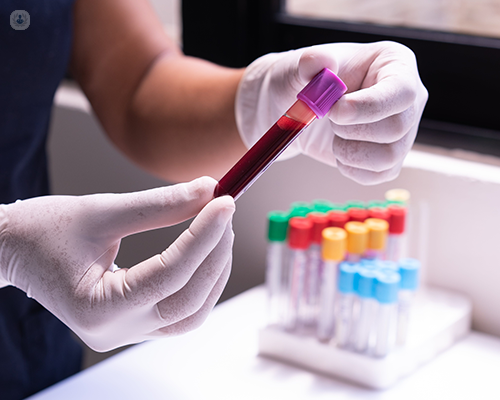Gastrin
What is analysed?
Gastrin is a hormone, produced by G cells, that stimulates the secretion of stomach acid by the parietal cells. Gastrin secretion is part of a complex feedback loop that helps to regulate gastrin levels and maintain the production of stomach acid necessary for the breakdown of food particles.
The gastric test measures the level of gastric in the blood.

What does the result mean?
The result indicates the concentration of gastrin in the blood.
Why conduct the analysis?
The test may be conducted for various reasons:
- To detect if there is an overproduction of gastrin
- To diagnose Zollinger-Ellison syndrome
- To diagnose multiple endocrine neoplasia type 1 (MEN-1)
- To detect and monitor for recurrence of gastrinomas, gastrin-producing tumours
When to conduct the analysis?
The test is conducted in various clinical scenarios:
- When peptic ulcers and/or diarrhoea and abdominal pain are suspected to be caused by excess gastrin
- Periodically, when monitoring for recurrence of gastrinomas
What sample is required?
A blood sample is required. The blood is drawn from a vein, usually in the arm.
Is any prior preparation necessary?
Patients should fast for 12 hours and avoid alcohol for 24 before the sample is taken. In some cases, patients may also need to stop taking certain stomach medications, as these could affect gastrin levels.
How is it performed?
The sample is sent to a laboratory, where it is analysed using immunoassays techniques to detect and quantify gastrin levels.
What are the normal values?
| Gastrin levels | Interpretation |
|---|---|
| Basal gastrin level | Typically less than 100 pg/mL (picograms per milliliter) |
| Stimulated gastrin level | After a meal, may rise to 200-300 pg/mL or higher |
What does having altered values mean?
- Elevated gastrin levels: Indicates conditions related to gastric acid production such as Zollinger-Ellison syndrome or G-cell hyperplasia.
- Low gastrin levels: Indicates decreased gastric acid production, which may occur in certain disorders affecting the stomach lining.